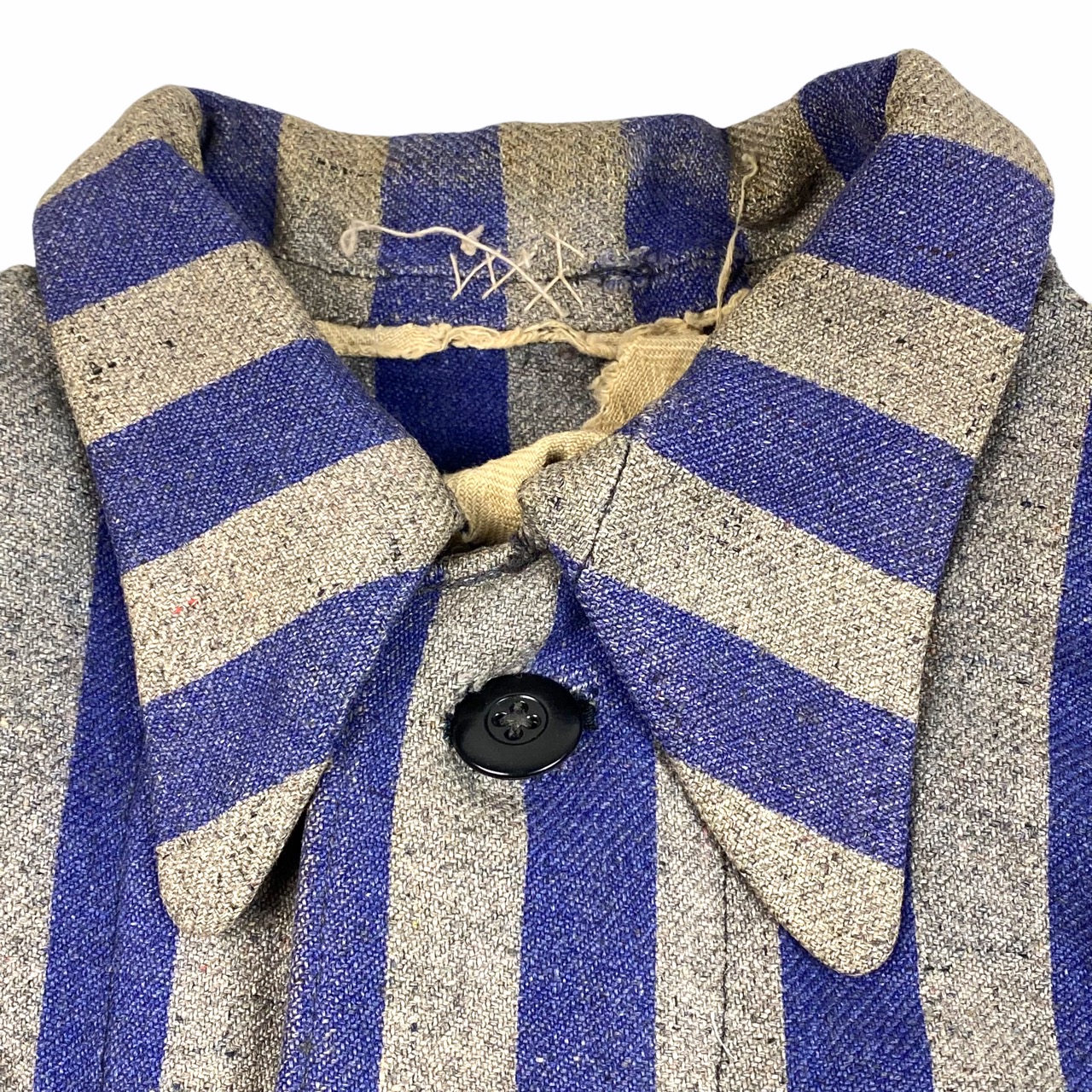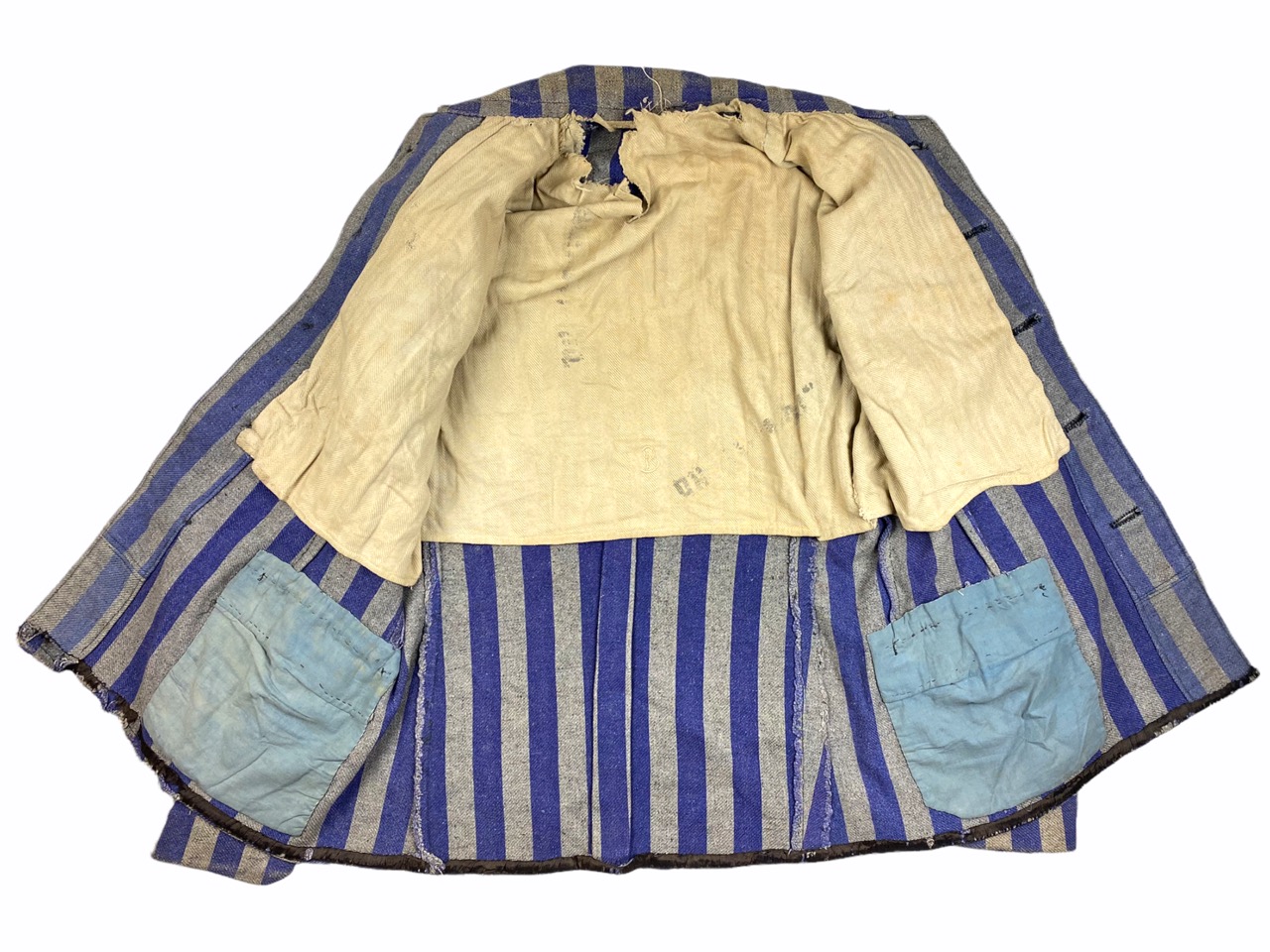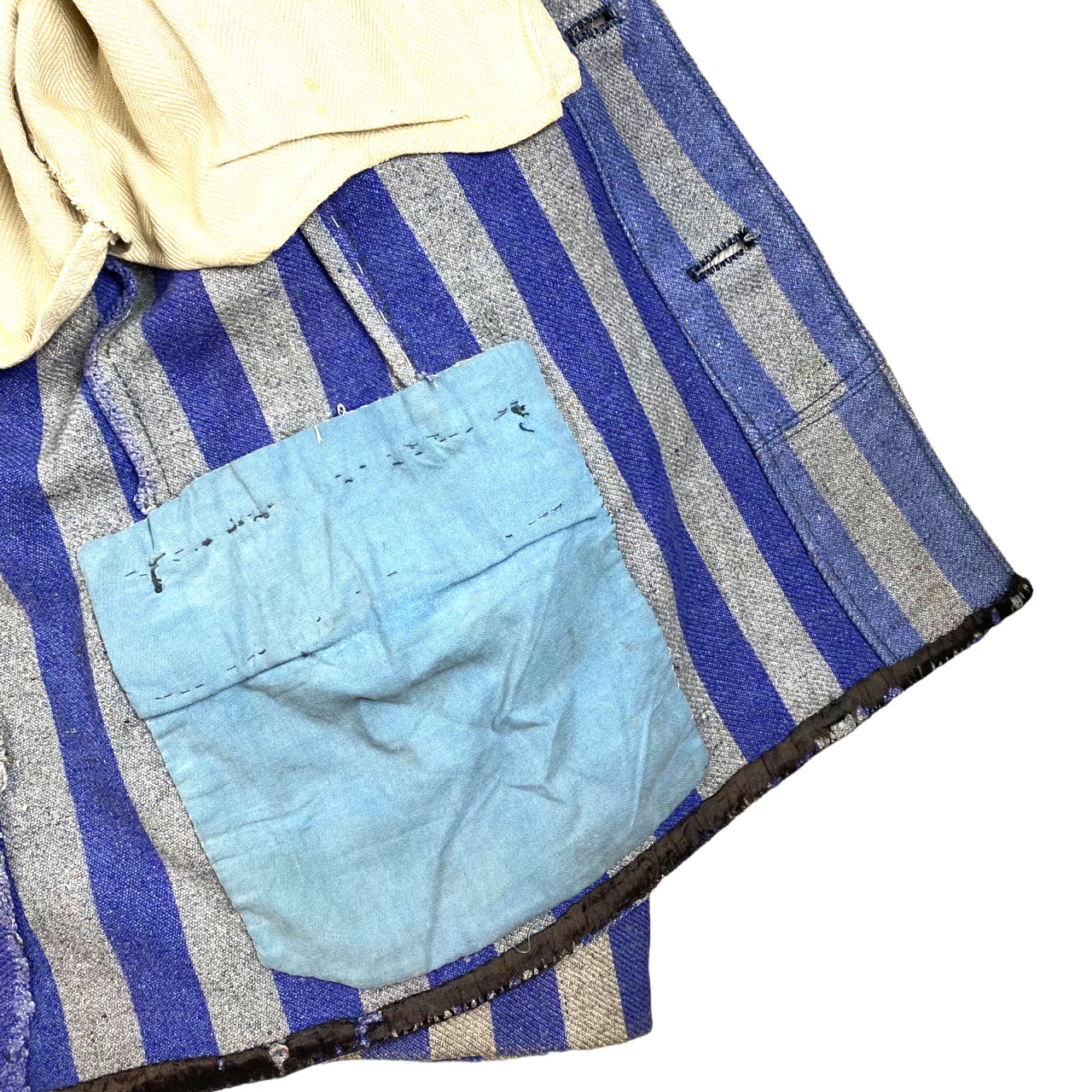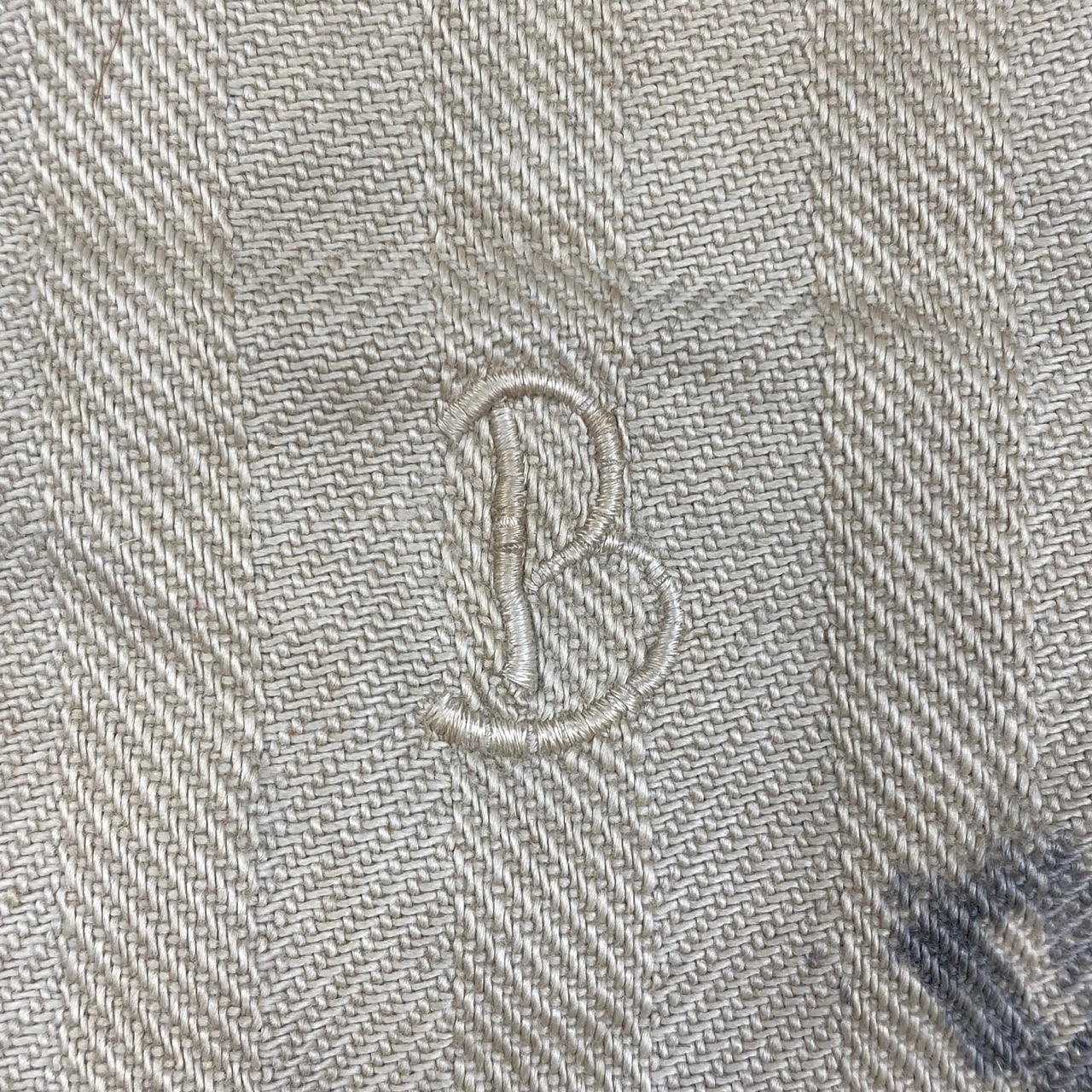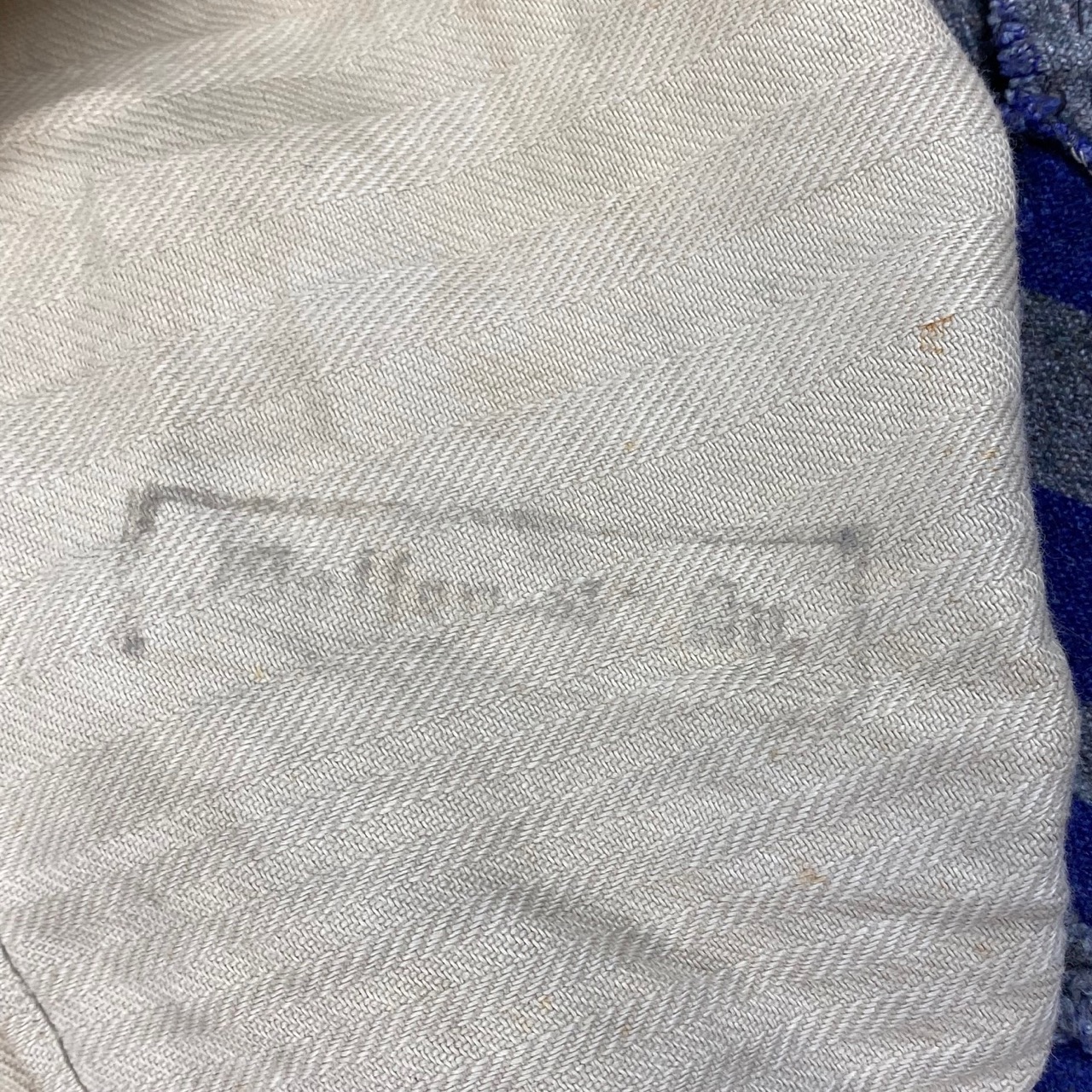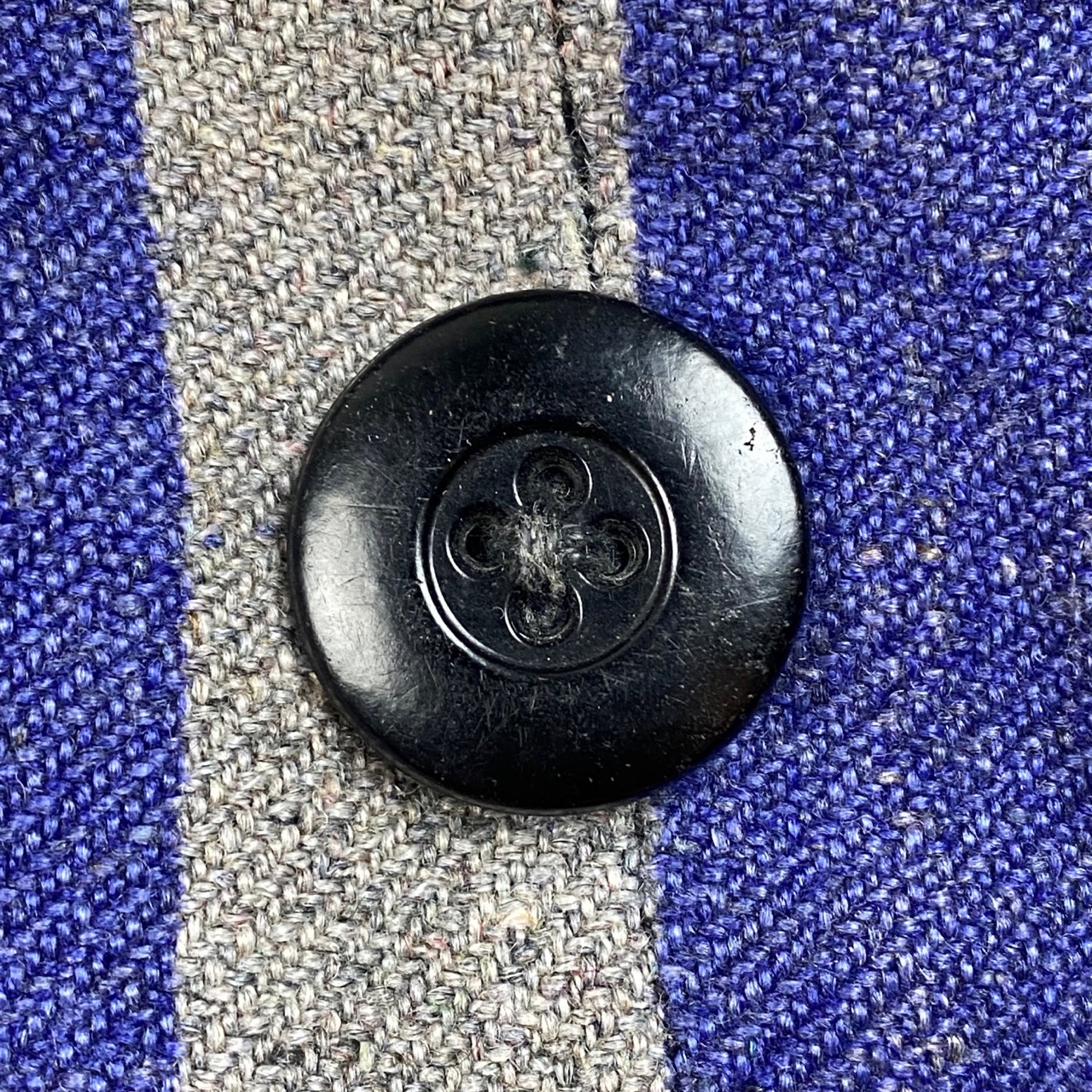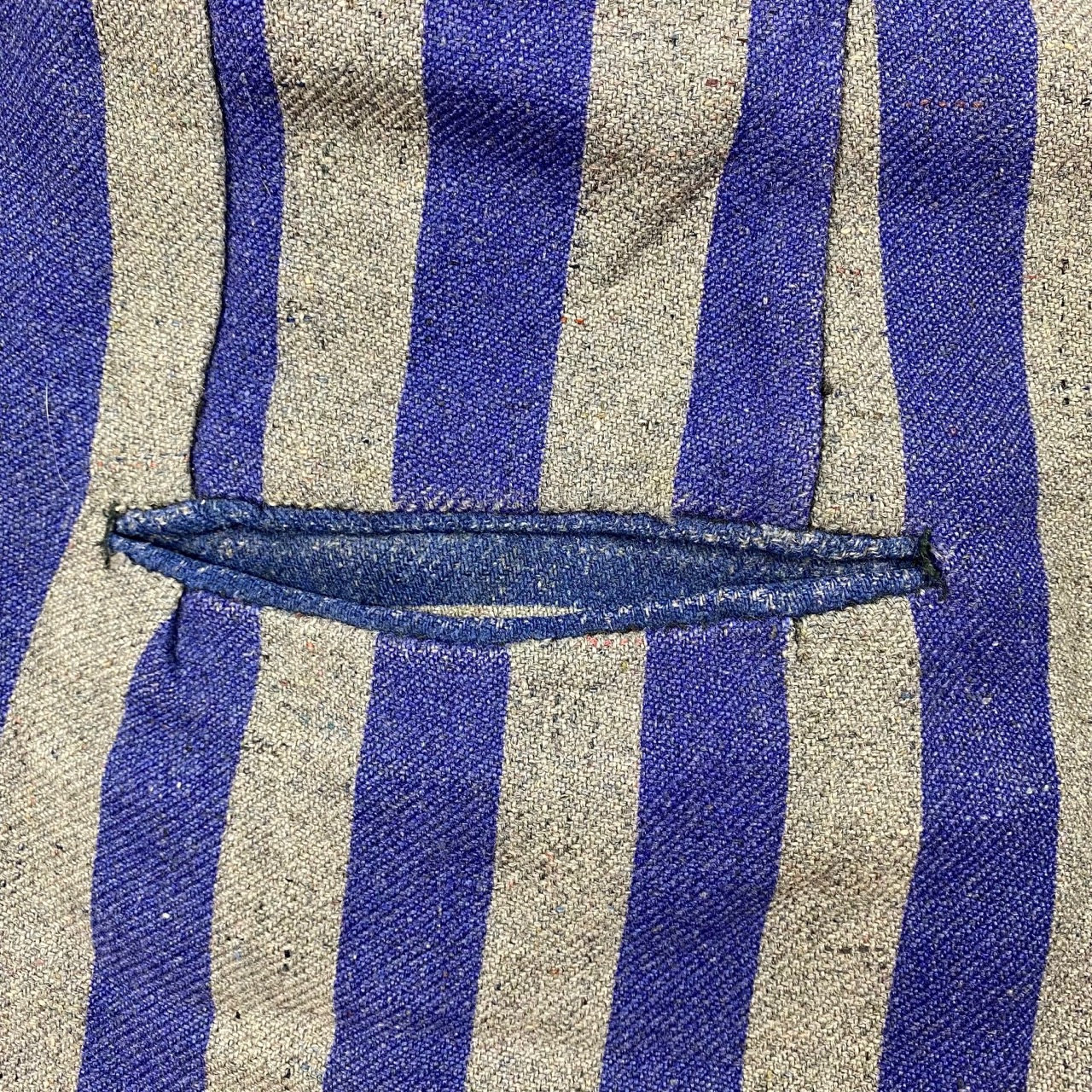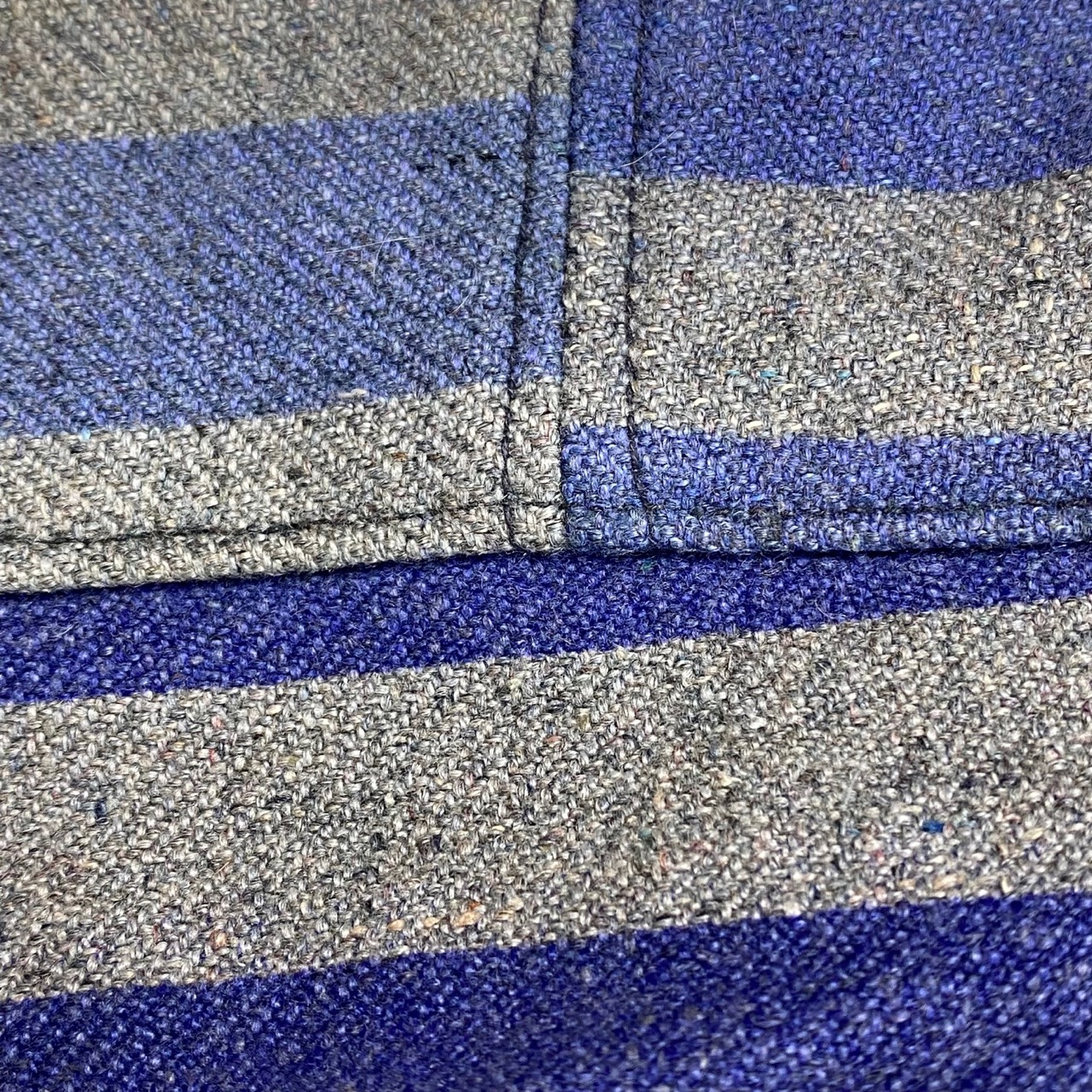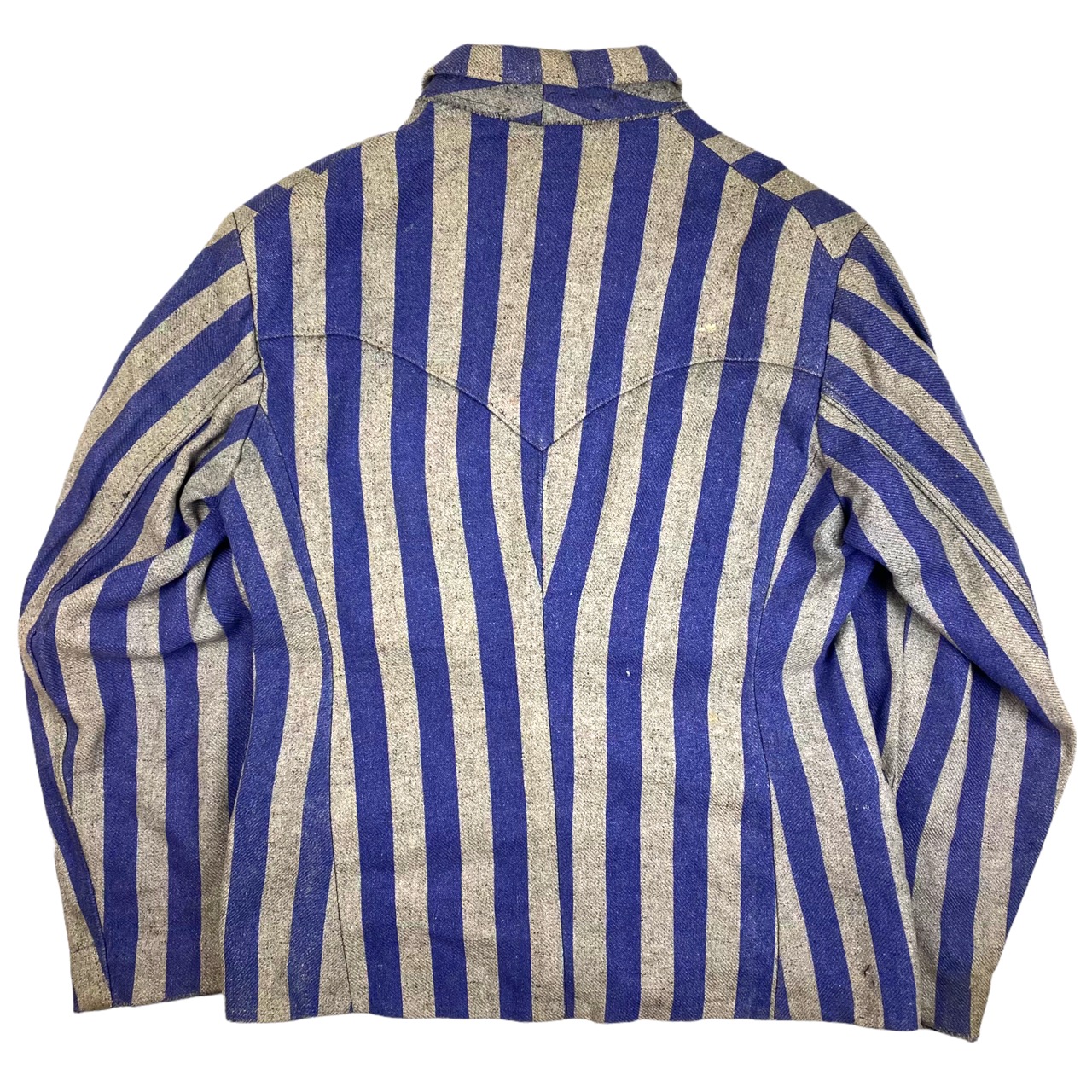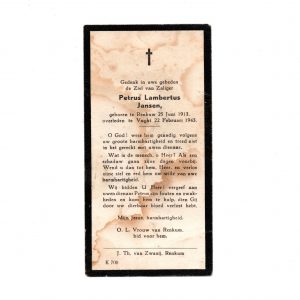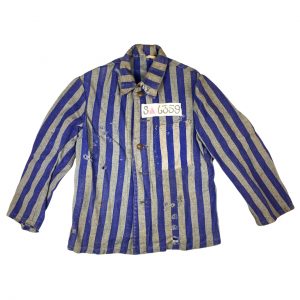Dachau/Buchenwald – Jacket of Alexandr Golubizkij
This concentration camp jacket belonged to the Russian political prisoner Alexandr Golubizkij.
Alexandr was born on September 17, 1924 in Kislowodsk which is located in the Caucasus in Russia and was a student.
He also served in the Red Army during the war.
Alexandr was imprisoned from December 13, 1944 in the Dachau concentration camp and was then transferred to the Buchenwald concentration camp.
The jacket is made of recycled wool, which can be recognized by the diversity of colors on the gray stripes.
On the front of the jacket is his camp number and it used to have a red triangle insignia underneath the number.
Prisoner’s number: 44286
Concentration camp Dachau
Concentration Camp Dachau was inaugurated on March 22, 1933.
It developed as a prototype for new concentration camps and occupied several special positions.
For most of its existence, Dachau served as a concentration camp, but Dachau was evacuated shortly after the start of the Second World War.
All prisoners were transferred to Mauthausen, Buchenwald, and Flossenburg.
A Part of the SS-Totenkopf-Standarten was stationed there to prepare for military deployment.
Concentration camp Dachau was reopened in February 1940.
As in other concentration camps, medical experiments were also conducted in Dachau.
Heinrich Himmler established in 1942 that an unlimited number of prisoners was made available for the experiments.
Some 206,000 people were held captive during the war and 41,500 were killed.
Dachau Concentration Camp was liberated on April 29, 1945 by American troops.
In the days leading up to the liberation, transports of prisoners from other concentration camps arrived in Dachau. Most people were in a pitiful state of exhaustion and malnutrition.
On April 26, 1945, a notorious death march started from Dachau.
During the liberation of the camp some 32,000 prisoners were still present.
Concentration camp Buchenwald
Concentration camp Buchenwald was located near Weimar (Germany) and was inaugurated on July 15, 1937.
Initially, the camp was designed for 8,000 prisoners and mainly criminals and political prisoners were deported here.
Not only Jews, homosexuals, Jehovah’s Witnesses and communists were imprisoned here, but also Soviet prisoners of war.
About 8,000 Soviet POWs were executed in the Buchenwald concentration camp between 1942 and 1943.
On April 11, 1945, the US Army’s Sixth Armored Division liberated the camp.
At that time, there were still about 21,000 inmates present.
During the war, there were 238,979 prisoners in concentration camp Buchenwald, 56,545 did not survive.


